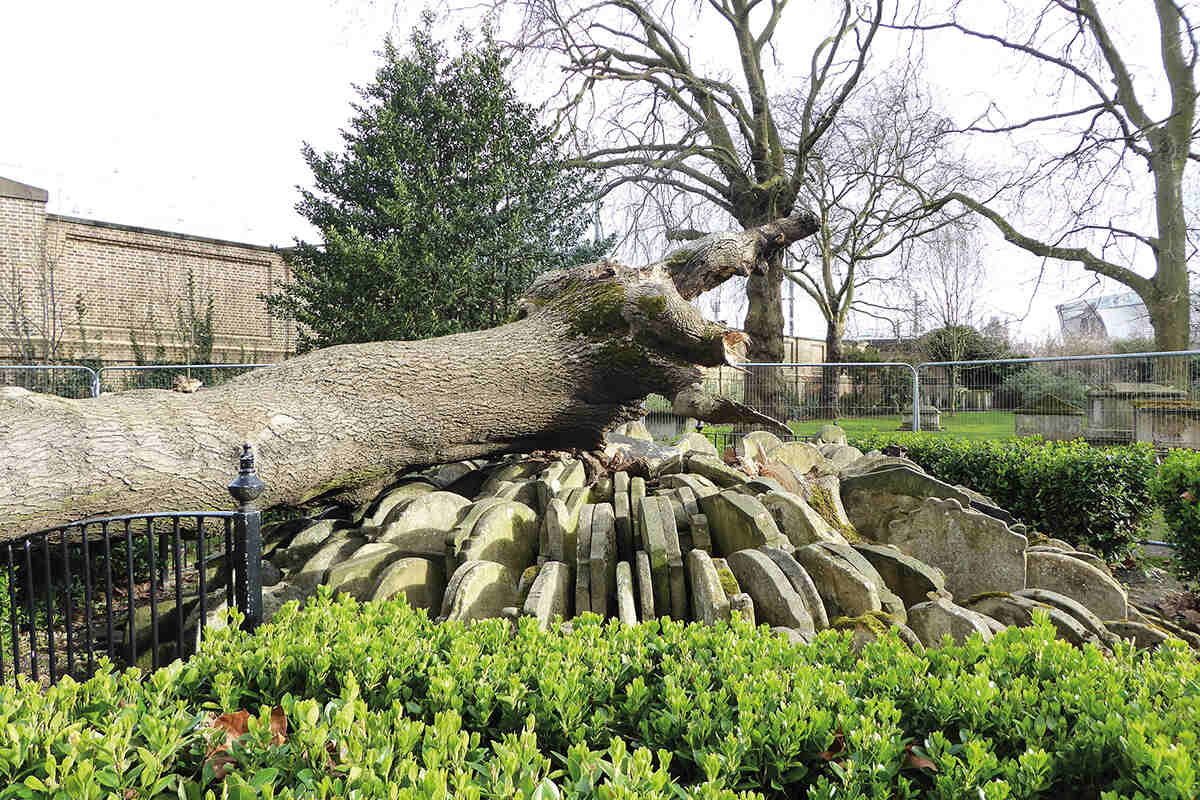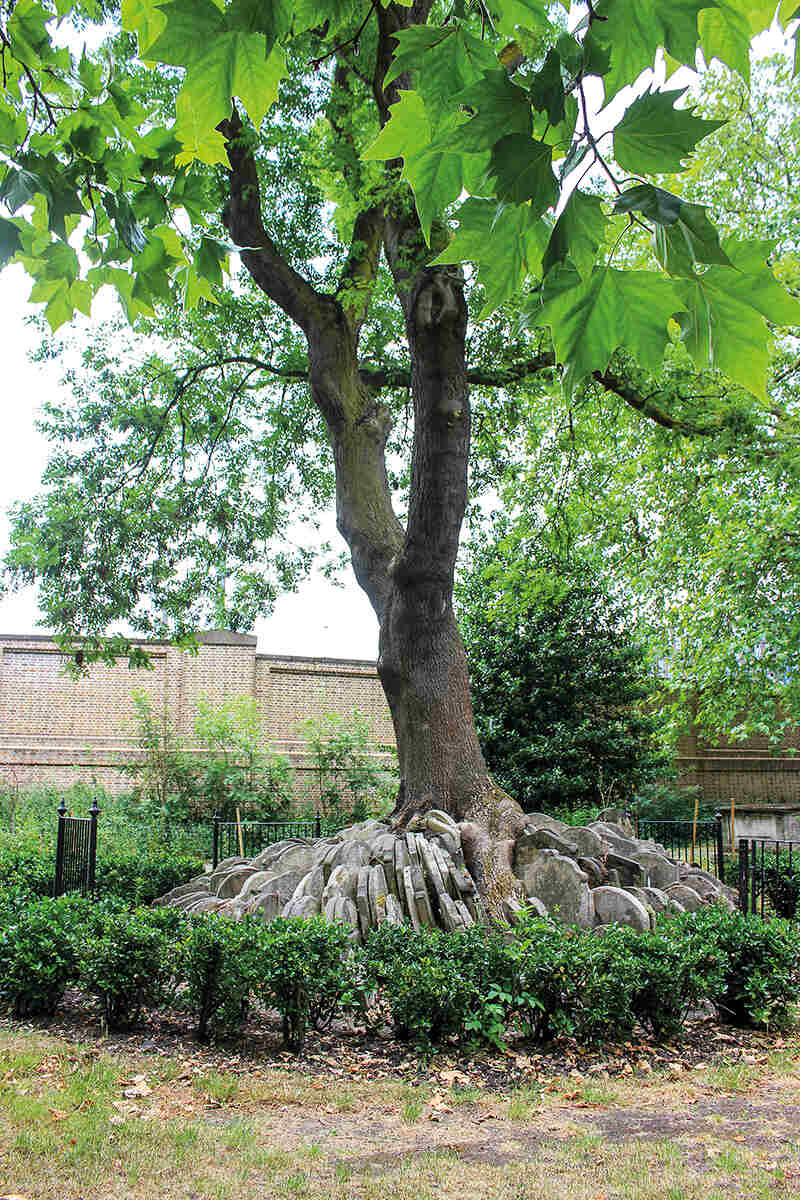
Rory Walsh revisits the Hardy Tree, famed for its backstory and being the strangest sight in any British churchyard
Discovering Britain
View • Urban • Greater London • Web Guide
Once upon a time, there was a tree beside an old church… When the Midland Railway Company began building its new station during the 1860s, the line ran through St Pancras churchyard. Numerous graves had to be dug up and moved. The story goes that an assistant architect by the name of Thomas Hardy stacked rows of headstones around the trunk of an ash tree. Hardy went on to become a world-famous writer and the ‘Hardy Tree’ a unique literary landmark. Hardy died in 1928. His wish was to be buried at Stinsford in Dorset, in the same grave as his late first wife, Emma. Instead, only Hardy’s heart got there, along with a surgeon’s hungry cat, which died after nibbling at it. The rest of Hardy was cremated then placed in Poets’ Corner in Westminster Abbey. Almost a century later, the Hardy Tree departed St Pancras. In the early hours of 27 December 2022, it collapsed.
When standing, the tree was one of the strangest sights in any British churchyard. As the ash’s roots spread among the stones, its backstory drew generations of visitors, including me for the July 2021 Geographical. The tree then offered ‘a powerful reminder of the bonds between nature and nurture, progress and history, the future and the past.’ Revisiting two years later was a poignant experience.

On a breezy March morning, the tree lay splayed upon the ground and penned behind a metal fence. The trunk had fallen parallel to the railway line. Broken branches recalled fractured limbs. Bone-like twigs were scattered in the grass. Embedded in the stump was a chipped shard of a gravestone, disturbed for a second time. Birds called, surrounding trees rustled – a chorus of mourners.
Besides its physical decline, the tree has befallen the fate of other famed figures. Loved in life, it has been debunked in death. Photos of St Pancras churchyard from 1926 show the piled gravestones without the tree. The ash, it seems, had sprouted from a seed that had landed among the stones half a century after Thomas Hardy worked there. The story of the ‘Hardy Tree’ is a romantic myth.
A myth but not a lie. The tree remains a symbol of life and death, and a reminder that places change. It also reflects how often landscapes are subject to our interpretations of them. At the time of writing, discussions were ongoing over what to do with the tree. Will the fall of a legend be the end of the story or a new chapter?
Discover more about Britain…





